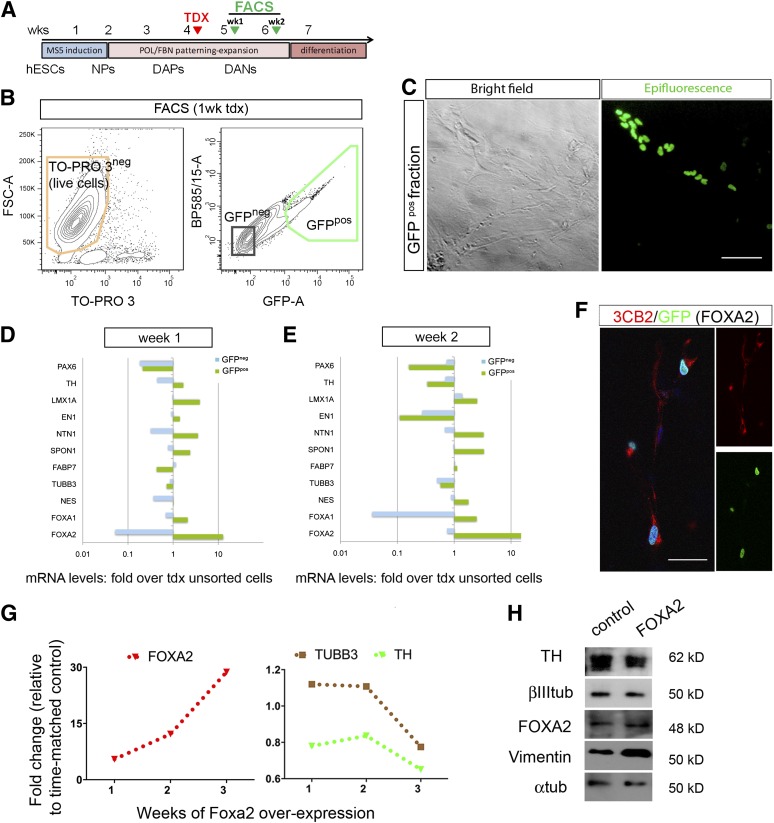Figure 4.
Selection of human neural progenitors that overexpress FOXA2. (A): Cells were differentiated, transduced, and selected as in the promoter experiments shown in Fig. 3. (B): GFPpos cells overexpressing FOXA2 were selected by FACS 1 or 2 weeks after transduction. The image shows a representative gating strategy for isolation of viable GFPpos cells 1 week after transduction (exclusion of doublets is not shown for clarity; see Materials and Methods and supplemental online Fig. 5). (C): Representative microphotographs of neural progenitors transduced at DIV33. (D, E): Quantitative real-time polymerase chain reaction (qPCR) transcriptional profiles for midbrain and floor plate genes are shown for cultures sorted at 1 and 2 weeks. Fold increase over unsorted cells revealed a remarkable increase in the GFPpos fraction for FOXA2 as expected and for other midbrain floor plate markers, in particular at 2 weeks with decreases in TH and PAX6 among others. Data are shown as fold change over unsorted controls in a log scale for clarity. (F): Most GFPpos cells coexpressed the radial glial marker 3CB2, shown at 10 days post sorting. (G): qPCR analysis showed a persistent increase of FOXA2 and a concomitant decline in TH and TUBB3 in transduced unsorted cells compared with untransduced control cultures. (H): A similar trend was observed at the protein level in unsorted cultures at 2 weeks post-transduction, with an increase in vimentin by Western blot. Scale bars = 100 μm in (C) and 50 μm in (F). Abbreviations: DANs, dopamine neurons; DAPs, dopamine progenitors; FACS, fluorescence-activated cell sorting; FSC, forward scatter; GFP, green fluorescent protein; hESC, human embryonic stem cell; NPs, neural progenitors; POL, polyornithine; tdx or TDX, transduction; TH, tyrosine hydroxylase; tub, tubulin; wk, week.

